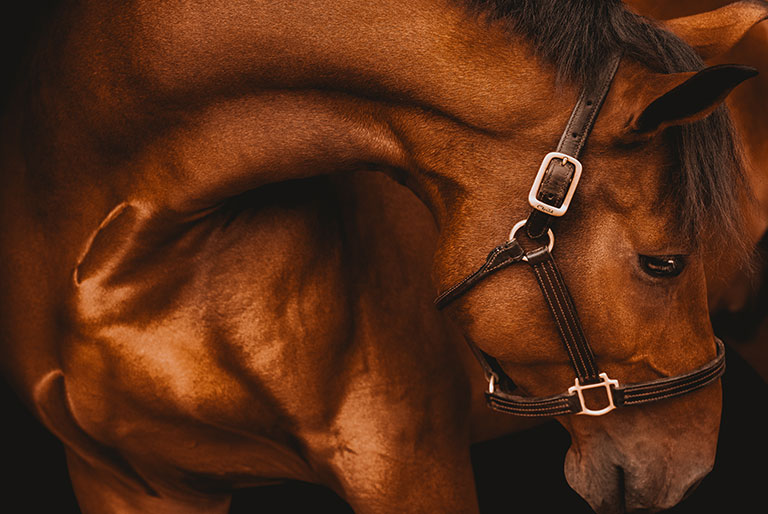Feed Like the Pros: What is the Best Nutrition for Foals, Weanlings, and Yearling?

What do elite equestrians like Mike Jennings, Steve Meadows, Tracy Magness, and John Shepard feed their growing horses to support development? The answer is on the labels. In this blog series, “Feed Like the Pros,” we reveal expert advice on equine nutrition, including how to feed growing horses and what ultra-premium ingredients to include in their diet.
Keep reading to learn the best nutrition for foals, weanlings, and yearlings, so you can feed like the ProElite® pros.
Diet Requirements for Growing Horses
First, it’s important to remember “growing horse” is a broad term that varies depending on age and development. Whether you’re feeding a foal vs weanling vs yearling vs growing horse can make a difference in their diet requirements. For the purpose of this article, we will be referring to…
- Foal: 0-6 months, still nursing
- Weanling: 4-12 months, no longer nursing
- Yearling: 12-24 months
- Growing Horse: <6 years
While horses do 75% of their growing in the first year, and reach 90% of their height by age 2, the average horse will continue to mature and develop well into their four to six year old years. Factors like breed, genetics, environment, and (you guessed it) diet can all make a difference in how quickly a horse matures, but it’s usually safe to say by age seven a horse has reached full adult maturity.
Best Nutrition for Foals, Weanlings, and Yearlings
“To get the best output, you need the best nutritional input.” When it comes to feeding growing horses, premium ingredients only work if the horse is willing to eat them. As you evaluate best feed and supplements, consider flavor profiles like vanilla, peppermint, or apple, as well as feed form like powder, liquid, or pellet. Palatability and form can help ease transition, while the diet requirements below can help ensure necessary nutrients for growth.
- Foal Diet: Nutrient recommendations for foals can vary if are nursing foals or orphan foals without a steady source of milk.
- Nursing Foal Diet: Ideally, a foal can nurse and get their primary source of protein and energy from mare’s milk. It is also common to supplement nursing foals with creep feed. Creep feeding foals is especially common if a mare’s milk lacks nutrients or to ease the foal into a milk-based transition feed. For example, breeders use ProElite Foals First® Starter & Creep to guarantee targeted levels of prebiotics, probiotics, amino acids, and chelated trace minerals to support all aspects of growth from gut, joint, tendon, hoof, hair coat, skin, and muscle. Premium starter and creep feeds will guarantee multiple amino acids like Lysine, Methionine, Threonine, and Tryptophan, as well as key nutrients for development like Copper and Zinc.
- Orphan Foal Diet: In addition to providing a starter and creep for foals under four months of age, orphan foals also require milk replacers. Whether the foal is orphaned, rejected, or has an under-producing mare, a milk-based formula that is equivalent to mare’s milk is critical for their survival and development. Vets recommend ProElite Foals First® Milk Replacer Powder because it is highly digestible, packed with six amino acids and offers a free-choice feeding option.
- Weanling Diet: While foals can start eating small amounts of grain after a few weeks of birth, weanlings have higher feeding rates and protein requirements to fuel the body as it grows. A high-protein, textured feed like ProElite Growth can help ease the weaning transition and provide necessary vitamins and minerals to support sound development. Some ingredients to look for on your weanling’s feed tag are Calcium, Phosphorus, Copper, and Zinc. Crude Protein should also range from 14-16%. For additional leg, joint, and tendon support, you can supplement with concentrated sources of vitamins and nutrients like ProElite Rejuvenaide® Max Liquid or ProElite Rejuvenaide® Max Pellets.
- Yearling Diet: Yearlings have similar nutrient requirements as weanlings but can usually start to decrease feeding rate as the growth curve slows and forage becomes the foundation of your horse’s new diet. Checking your yearling’s Body Condition Score, Topline Evaluation, and overall appearance is a good leading indicator if something is missing from their diet. If a yearling needs more calories and weight gain, a high-fat top dress like ProElite Omega Advantage could be the answer. Or if the opposite is true, your answer may lie in a ration balancer with a lower feeder rate. The key for sound development is healthy weight and balanced diet.
Choose the Winning Combo
Because of the high nutrient demands for growing horses, the most elite breeders trust the ProElite suite of premium products to fuel their foals, weanlings, and yearlings. While there are many combinations of feed and supplements that can meet your needs, here are some of the most popular for growing horses.
Diet Balancers and Top Dress:
- ProElite® Alfalfa Advantage (15% Protein | 15% Fiber | 5% Fat)
- ProElite® Grass Advantage (30% Protein | 6% Fiber | 5% Fat)
- ProElite® Omega Advantage (15% Protein | 8% Fiber | 24% Fat)
Feed:
- ProElite® Growth (16% Protein | 15% Fiber | 9% Fat)
Supplements:
- ProElite® Foals First® Milk Replacer Powder
- ProElite® Foals First® Starter & Creep
- ProElite® Rejuvenaide® Max Liquid
- ProElite® Rejuvenaide® Max Pellets
Don’t wait. Choose the winning combo of ProElite feed and supplements for your growing horses.

